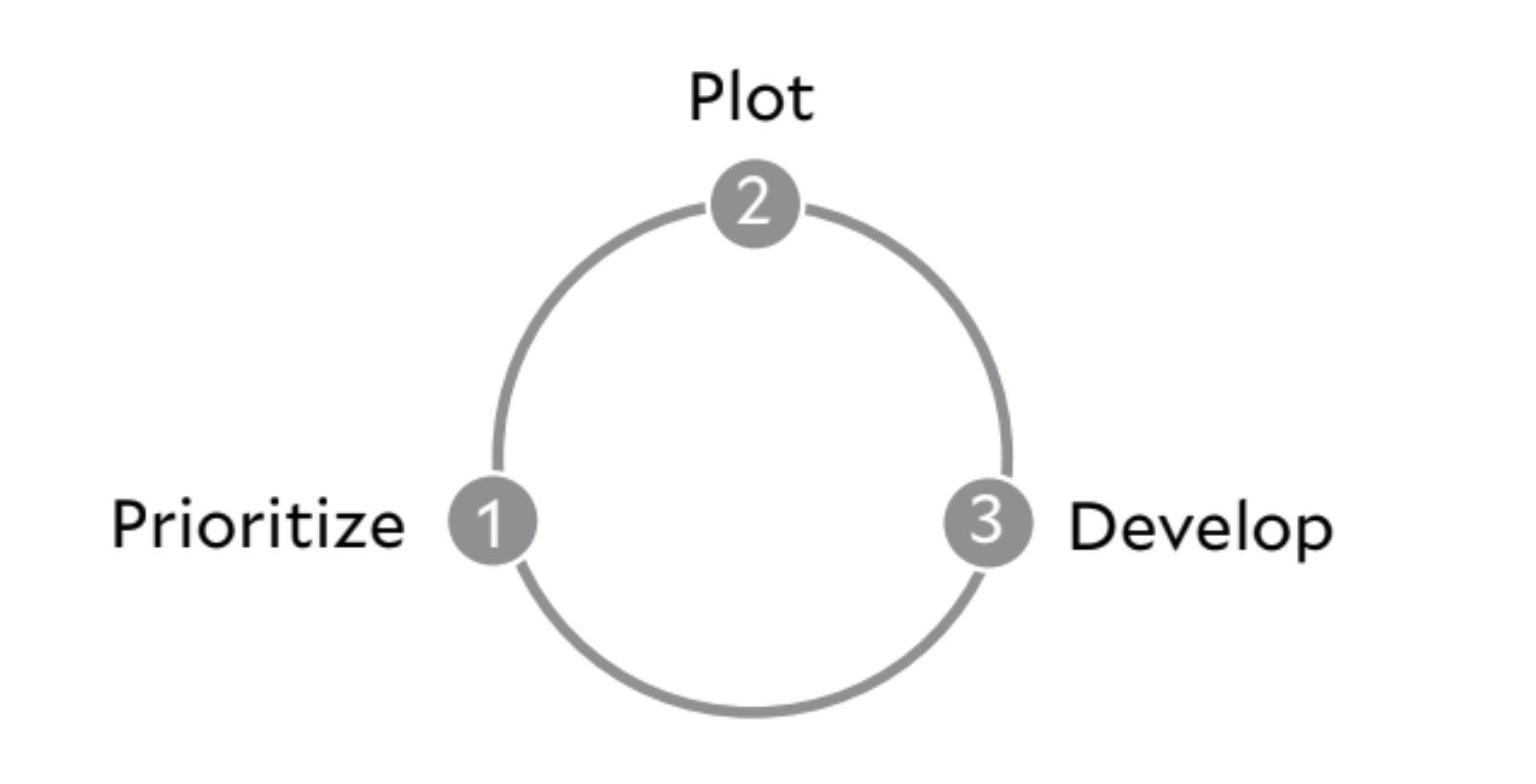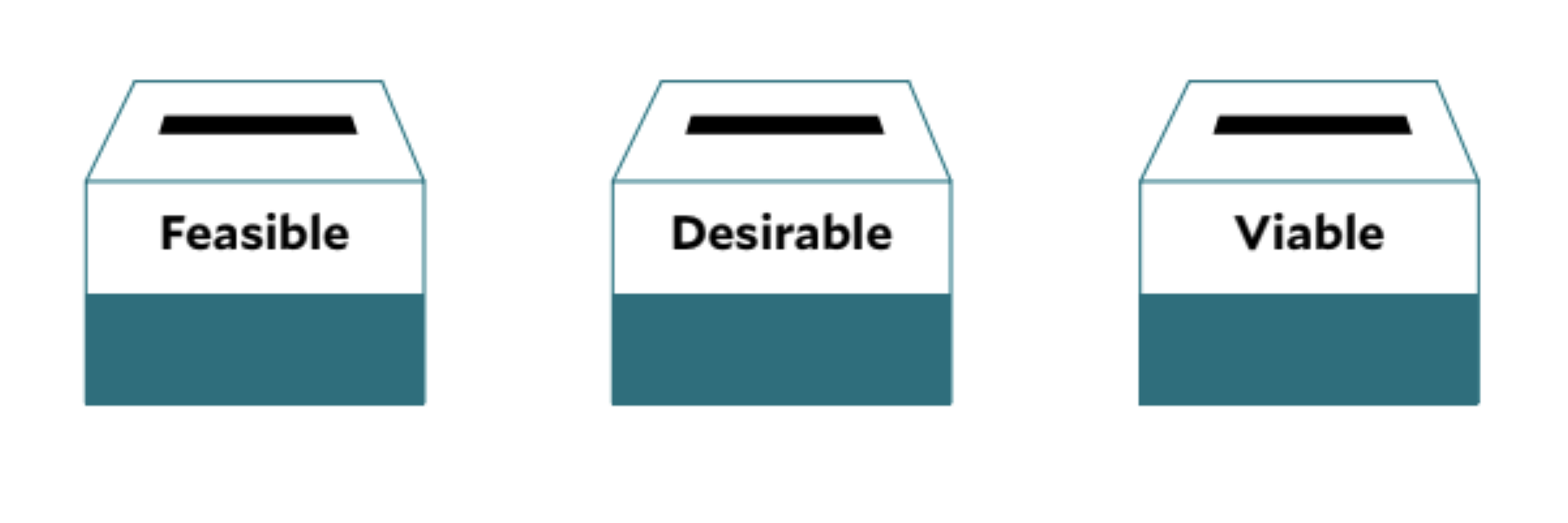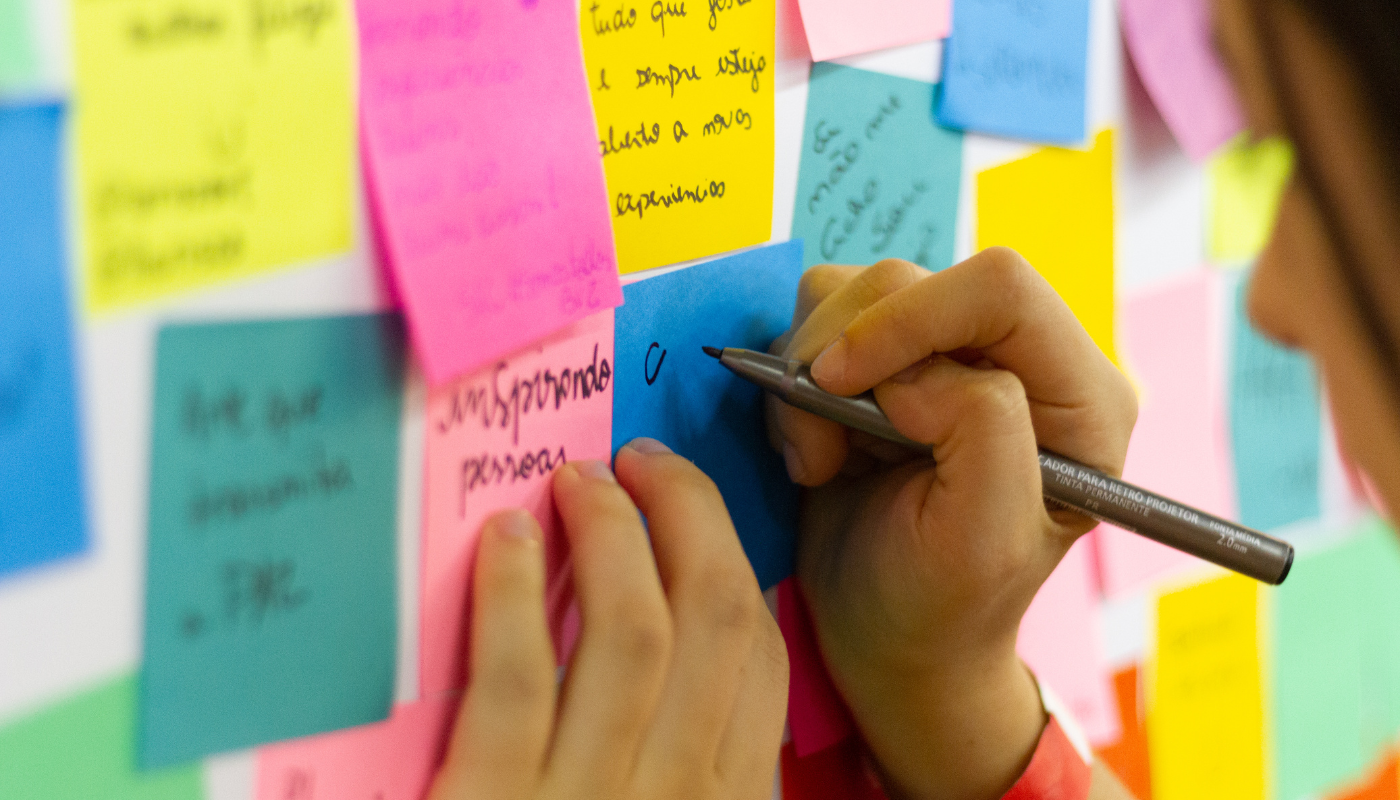
A product roadmap is a strategic blueprint that outlines your product’s evolution over time. It’s more than just a timeline — it’s a communication tool that helps align teams, define priorities, and provide clarity around what you're building, why you're building it, and when key features or releases are expected to happen.
Think of your roadmap as a living document that adapts alongside your product. It should:
Most importantly, it should answer two essential questions:
While product managers typically lead roadmap creation, successful roadmapping is a team sport. Your designers, engineers, marketers, customer success reps, and even stakeholders should all have input. The most effective roadmaps reflect the collective wisdom and real-world needs of the entire team.

If you're going to create a standout product roadmap, it's essential that you and your team know the lingo.

Is it the right time to create a product roadmap? If you find yourself in either of the following situations, the answer is "yes".
Use a roadmap if:
Roadmapping too early can derail product development. Before you start, make sure you've done the foundational work. The three following problems inciate that you need to conduct further research and user testing before creating a roadmap:

1. Insufficient user validation
Have you talked to users? Have you validated their needs?
Tip: Run stakeholder workshops and early discovery interviews.
2. Imbalanced development focus
Does your team understand what’s desirable, viable, and feasible?
Tip: Use the Design Thinking Venn diagram to weigh these three factors.
3. Ineffective prioritization
Are you clear on what to build first — and why?
Tip: Use methods like the RICE or MoSCoW frameworks to rank epics.

Roadmapping is essential for short, medium and long term product planning. Even when taking an agile approach to development, all three horizons can and should be in harmony. The three following roadmap types can be created separately or strung together to create a complete product path.
1. The Agile Roadmap
Focused on short-term sprints and immediate priorities. Updated often.
2. The Release Roadmap
Looks 3–9 months ahead. Organizes features into meaningful releases that map to business goals.
3. The Product Lifecycle Roadmap
Takes the long view, plotting the product from MVP through maturity. Aligns with strategic business goals and larger market trends.
Whichever roadmap you want to create, you'll need a toolkit. Here are the top tools modern product teams are using to build flexible, scalable, and collaborative product roadmaps in 2025:

Before you jump into timelines and feature sets, it’s critical to lay a solid foundation. This process is divided into two phases: Prework, which establishes direction and user understanding, and Roadmapping, which organizes, prioritizes, and visualizes the actual plan.
This stage is about discovery — understanding your users, defining the problem, and validating early ideas. Skipping this phase leads to guesswork and costly rework down the road.
Before building anything, you need clarity on what problem you’re solving and for whom. Hold a cross-functional discovery workshop with key stakeholders — product managers, designers, engineers, and business leads — to align on a single problem statement. This statement should be specific, user-centered, and measurable.
Ask:
Pro tip: Don’t settle for surface-level assumptions. Use user research, support tickets, or behavioral data to back up your insights.
Don’t miss our step by step guide to creating your problem statement!
To build the right product, you need to know who you’re building it for.
Create detailed user personas representing your target audience segments, including demographics, motivations, goals, behaviors, and challenges. Involve your entire team in this process so that everyone internalizes the end user.
Each persona should answer:
Pro tip: Use interviews, surveys, and customer analytics to inform personas — avoid relying on stereotypes or guesswork.
Create the perfect user persona with the help of our step by step guide.

With personas in hand, map out how users currently experience the problem. A user journey map is a visual timeline of a persona’s interaction with your product or service — before, during, and after use. Identify touchpoints, pain points, and moments of opportunity. This helps you uncover where your product can make the biggest impact.
Ask:
Pro tip: Include emotional highs and lows in your map — these reveal areas for delight or improvement.
Check out our step by step guide to user journey mapping, here!
Now that you understand the problem and user needs, it’s time to brainstorm solutions - then test them fast. Hold collaborative brainstorming sessions (e.g., design sprints or whiteboard sessions) to ideate multiple ways to solve the core problem. Then create quick, low-fidelity prototypes and put them in front of real users for feedback.
Focus on:
Pro tip: A solution that works on paper might fail in practice — test early to save time and money.
Ready to start the ideation process? Here’s an in depth guide to help!

Once you’ve laid the strategic groundwork, you’re ready to structure your roadmap. This phase turns insights into action by organizing and prioritizing the work.
An epic is a large body of work that can be broken down into smaller user stories or tasks.
Start by translating validated solutions from the previous phase into epics that align with user needs. Each epic should be outcome-driven, describing what you’re delivering and why. Group related features under each epic and label them clearly for team visibility.
Examples of epics:
Pro tip: Avoid going too granular at this stage — user stories will evolve during development.
With a list of epics, it’s time to determine which to build first. Use prioritization frameworks like:
Prioritize based on:
Pro tip: Balance quick wins with long-term strategic bets. Don’t just prioritize by effort — prioritize by impact.
Finally, visualize your roadmap so it’s easy to understand, track, and adapt. Group your epics into time-based phases like:
Add visual cues like:
Tailor the roadmap for different audiences:
Pro tip: Roadmaps are living documents. Review and update them regularly (e.g., monthly or quarterly) to reflect new learnings, user feedback, or shifting priorities.

Even experienced teams sometimes fall into traps when it comes to roadmapping. Here are three common myths — and why they’re dangerous:
Many teams treat roadmapping as a one-and-done planning session — but a product roadmap should evolve continuously.
Your market, users, and team capabilities change over time, and your roadmap must adapt in response. Failing to revisit it regularly means you're operating on outdated assumptions, which can result in missed opportunities or wasted effort.
Best practice: Review your roadmap at least quarterly. Use real user feedback, business metrics, and market signals to guide revisions.
Agility is essential — but without an underlying strategy, “agile” can become an excuse for chaos.
Being agile doesn’t mean flying blind or building features on a whim. It means you’re able to adapt within a strategic framework. Agile roadmaps allow for iteration, but they still require clarity on product vision, goals, and customer outcomes.
Best practice: Use agile sprints to execute a clearly defined product strategy. Short-term adaptability should be anchored by long-term direction.
Many teams mistakenly believe they should begin product development by writing a roadmap. In reality, the roadmap comes after discovery.
Before you decide what to build and when, you need to understand user problems, validate assumptions, and explore solutions. Without this foundational research, your roadmap will be speculative and likely off-target.
Best practice: Prioritize discovery work — user interviews, research, and prototyping — before you commit to timelines and feature sets.

Whether you're building an MVP or expanding an established product, these practical tips will help you create a product roadmap that’s useful, flexible, and aligned with your goals.
Don’t get bogged down in the weeds by detailing every user story upfront.
Start by defining epics — large bodies of work that deliver user value. These provide structure and clarity, while still allowing room for iteration. You can break them down into stories during sprint planning.
Why it matters: Granular stories often change; epics help teams stay focused on the big picture.
Change is inevitable. Embrace it by building flexibility into your roadmap.
Set clear goals, but be willing to pivot when user needs, market conditions, or business strategies shift. Agile planning frameworks like “Now / Next / Later” help facilitate this adaptability.
Why it matters: Static roadmaps are irrelevant the moment real-world variables change — and they always do.
Don’t create your roadmap in isolation. Involve stakeholders from product, design, engineering, sales, marketing, and customer support. Early involvement ensures that all perspectives are represented and increases buy-in across the organization.
Why it matters: Diverse input leads to smarter prioritization — and fewer last-minute surprises.

Use collaborative tools and prioritization frameworks to involve your team in decision-making.
Try methods like:
Why it matters: Team members are more committed when they feel heard. And collective decision-making often results in more thoughtful, balanced roadmaps.
Make your roadmap digestible at a glance. Use visual tools like Miro, FigJam, or sticky notes to highlight:
Why it matters: A visual roadmap is easier to share, understand, and update. It also encourages team engagement during planning sessions.
Your minimum viable product is not just a stepping stone — it’s your foundation.
Spend time refining your MVP so it delivers true user value and helps you learn what works (and what doesn’t). A strong MVP gives you the data and confidence to build the right next features.
Why it matters: A weak MVP leads to false validations and wasted follow-up efforts.
Want to learn more about MVP’s and how to create yours? Don’t miss this step by step guide!

User testing shouldn’t be a separate phase — make it part of your roadmap process. Test early versions of features (even prototypes) with users as you build. Integrate feedback loops directly into your sprint cadence.
Why it matters: Continuous validation ensures you're not investing in features users don’t want or understand.
Prioritization should reflect real user needs, not just stakeholder hunches.
Use data from interviews, support tickets, analytics, and usability testing to shape your epics and sequencing.
Why it matters: When roadmaps are built on feedback, you solve real problems instead of building “shiny” features that go unused.
It’s great to dream big — but your roadmap also needs to be grounded in reality.
Vet ambitious features by prototyping and pressure-testing them with engineering and business teams. Ensure each epic contributes to both your vision and your viability.
Why it matters: An inspiring roadmap that can’t be executed is just wishful thinking.
If you’re stuck or overwhelmed, don’t hesitate to bring in outside help.
Experienced consultants, product strategists, or development partners (like Yeti!) can provide fresh insights, help facilitate planning sessions, or even build parts of your roadmap with you.
Why it matters: An external perspective can cut through internal politics, speed up decision-making, and ensure your plan is practical and goal-aligned.

Building a product roadmap isn’t just about setting deadlines or outlining features — it’s about creating a shared vision, aligning your team, and making confident, informed decisions that move your product forward. Whether you’re launching an MVP or iterating on a mature product, a strong roadmap ensures that every step you take is rooted in real user needs and strategic clarity.

 The Ultimate Guide to QA Testing
The Ultimate Guide to QA TestingWant to launch a flawless app in 2025? Our Ultimate Guide to QA testing explains everything you need to know - the processes, tools, and best practices that will help you deliver bug-free, user-friendly products that users love!

 Building Intuitive & Accessible Healthcare Apps: A Guide to UX
Building Intuitive & Accessible Healthcare Apps: A Guide to UX In 2025, apps have become essential tools throughout the world of healthcare. This comprehensive UX guide for healthcare apps explores best practices and key considerations for creating user-friendly, accessible solutions that enhance patient outcomes. Topics include HIPAA compliance, EMR integration, and accessibility.

 How To User Test: UX Design for Successful App Development
How To User Test: UX Design for Successful App DevelopmentUser testing is one of the most powerful tools in the app development process, as it provides you with invaluable insights into what’s working, what’s confusing, and what’s missing - ensuring your app provides users with a seamless experience. In this guide, we'll walk you through our user testing process, step by step!